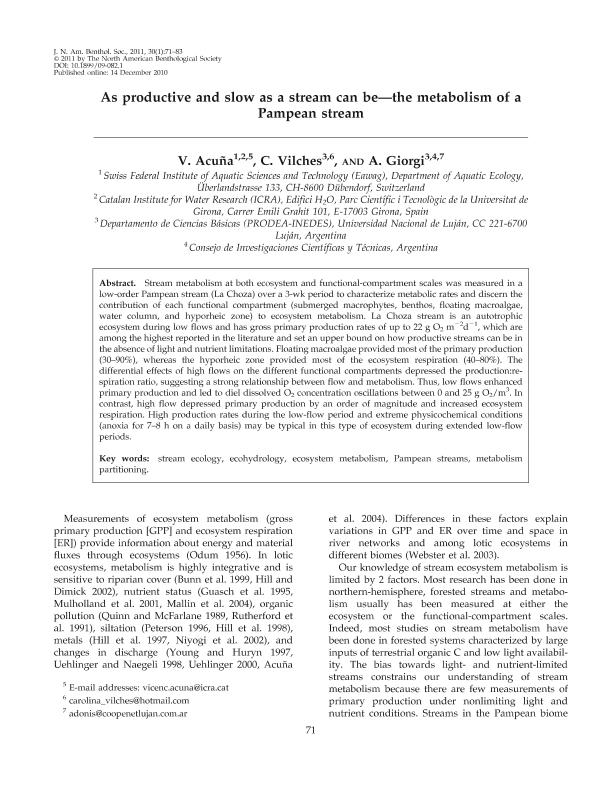Artículo
As productive and slow as a stream can be-the metabolism of a Pampean stream
Fecha de publicación:
03/2011
Editorial:
North Amer Benthological Soc
Revista:
Journal Of The North American Benthological Society
ISSN:
0887-3593
Idioma:
Inglés
Tipo de recurso:
Artículo publicado
Clasificación temática:
Resumen
Stream metabolism at both ecosystem and functional-compartment scales was measured in a low-order Pampean stream (La Choza) over a 3-wk period to characterize metabolic rates and discern the contribution of each functional compartment (submerged macrophytes, benthos, floating macroalgae, water column, and hyporheic zone) to ecosystem metabolism. La Choza stream is an autotrophic ecosystem during low flows and has gross primary production rates of up to 22 g O2 m-2d-1, which are among the highest reported in the literature and set an upper bound on how productive streams can be in the absence of light and nutrient limitations. Floating macroalgae provided most of the primary production (30-90%), whereas the hyporheic zone provided most of the ecosystem respiration (40-80%). The differential effects of high flows on the different functional compartments depressed the production:respiration ratio, suggesting a strong relationship between flow and metabolism. Thus, low flows enhanced primary production and led to diel dissolved O2 concentration oscillations between 0 and 25 g O2/m3. In contrast, high flow depressed primary production by an order of magnitude and increased ecosystem respiration. High production rates during the low-flow period and extreme physicochemical conditions (anoxia for 7-8 h on a daily basis) may be typical in this type of ecosystem during extended low-flow periods.
Archivos asociados
Licencia
Identificadores
Colecciones
Articulos(SEDE CENTRAL)
Articulos de SEDE CENTRAL
Articulos de SEDE CENTRAL
Citación
Acuña, V.; Vilches, Carolina; Giorgi, Adonis David Nazareno; As productive and slow as a stream can be-the metabolism of a Pampean stream; North Amer Benthological Soc; Journal Of The North American Benthological Society; 30; 1; 3-2011; 71-83
Compartir
Altmétricas




